Are you looking for new and exciting ways to spruce up your outdoor space? If so, having a lily garden could be just the project that you need!
There are so many different types of lilies – daylilies, oriental lilies, Asiatic lilies – that it can be hard to know where to start. But don’t worry; we have plenty of inspiration here in this blog post.
From selecting the right plants and soil type to layout ideas and maintenance tips, we’ll show you how to design a beautiful floral haven with these gorgeous blooms.
So grab some coffee (or tea!) and get ready for an abundant burst of colour – because once you dive into these creative projects, there’s no turning back!
Types of Lilies
Asiatic Lilies
Asiatic lilies are the most common type of lily, and they come in many different colours.

They require full sun to reach their full potential, so make sure you choose a sunny spot in your garden when selecting a planting location. Asiatic lilies should be planted 6-12 inches apart and 8-10 inches deep.
Asiatic-Oriental Lilies
Asiatic-Oriental lilies are hybrid crosses between Asiatic and Oriental lilies. They are even more beautiful than their parent plants, and they have an extra long bloom time.
Asiatic-Oriental lilies require full sun to reach their maximum potential and should be planted 8-10 inches deep.
Trumpet Lilies
Trumpet lilies are also known as Easter lilies and they have large, fragrant blooms. They require full sun and should be planted 8-10 inches deep. Trumpet lilies can reach up to 6 feet tall, so make sure you give them enough room to grow!
Longiflorum-Asiatic Lilies
Longiflorum-Asiatic lilies are hybrid crosses between Longiflorum and Asiatic lilies. They have an extra long bloom time and require full sun to reach their maximum potential. They should be planted 8-10 inches deep, and they can reach up to 4 feet tall. [1]
Oriental-Trumpet Lilies
Oriental-Trumpet lilies are hybrid crosses between Oriental and Trumpet lilies. They require full sun to reach their maximum potential, and they should be planted 8-10 inches deep.
These lilies have a unique shape and fragrance that make them an excellent addition to any garden.
Oriental Lilies
Oriental lilies are a type of lily that have large, fragrant blooms. They require full sun to reach their maximum potential and should be planted 8-10 inches deep. These lilies can reach up to 4 feet tall, so make sure you give them plenty of space!
Species Lilies
Species lilies are a type of wild lily that bloom in the early summer. They are adaptable to most soils and can tolerate partial shade. Species lilies should be planted 6-8 inches deep, and they can reach up to 3 feet tall.
Soil Requirements for Lilies
To help your lilies grow well, pick the right soil. Lilies like a soil that is not too wet or soggy and has a pH between 6.0 and 7.5. They also need lots of organic matter in the soil, so add compost or old manure before planting them.
Layout Ideas for Lilies
When planning your lily garden, you’ll want to make sure that you keep a few things in mind. For example, if you’re planning on having different types of lilies, be sure to keep them separated so they don’t cross-pollinate.
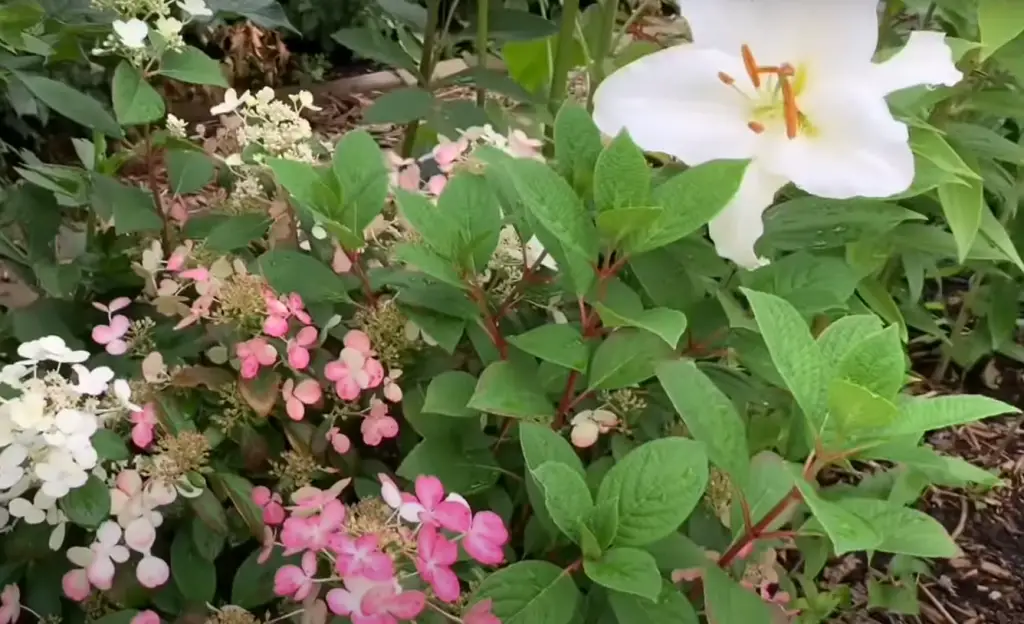
Also, plan for plenty of room between plants to allow them to spread out and reach their full growth potential. Finally, you’ll want to make sure that the lilies get enough sun – at least six hours a day.
How to Care for Lilies?
Once you’ve planted your lilies, there are a few maintenance tasks that you’ll need to do in order to keep them looking their best. First and foremost, make sure to water them regularly – about once a week or when the top inch of soil feels dry.
Additionally, be sure to deadhead the flowers as they fade to encourage further blooms. Finally, keep the soil around the lilies free of weeds by either pulling them out or using a hoe to remove them.
Lily Garden Ideas
Now that you have all the information you need about lilies and their care, here are some creative ideas for incorporating them into your garden:
- Create a container garden by planting lilies in a large pot or hanging basket.
- Add lilies to your flower beds for an extra pop of colour and fragrance.
- Create a pathway in your garden with alternating varieties of lilies.
- Plant multiple types of lilies together for a stunning visual effect.
- Line the perimeter of your garden with tall lilies for a dramatic look.
No matter how you choose to use them, lilies are sure to bring beauty and fragrance to your garden! With the right care and attention, these gorgeous blooms will thrive for years to come. So get creative and enjoy your own lily garden today!
Companions for Lilies
When planting lilies, it’s important to choose companions that will complement and enhance the beauty of your blooms.
These plants provide contrast in both color and texture while keeping up with the lily’s water needs. Planting a few companion plants around your lilies will give your garden an extra bit of flair!
Annuals
Cosmos
Cosmos are an easy-to-grow annual flower that come in a variety of colors. They require full sun and well-drained soil, and they should be planted 4 inches deep. Cosmos have large blooms on tall stems and make a great addition to any garden!
Dianthus
Dianthus is an annual flower that smells nice. It has soft leaves and small flowers. It needs lots of sunlight and soil that doesn’t have too much water. Plant it one inch deep in the ground. Dianthus can make any garden look great!
Dill
Dill is an annual herb that is easy to grow. It prefers full sun and moist soil. When planting, make sure the roots get enough space by planting them about 6 inches apart. Dill adds a great flavor to many dishes and can bring beauty to any garden!
Geraniums
Geraniums are a classic annual flower that come in a variety of colors. They require full sun and well-drained soil and should be planted at least 6 inches deep. Geraniums have large blooms on tall stems and make a beautiful addition to any garden! [2]
Marigold (shorter varieties)
Marigolds are a classic annual flower that come in a variety of colors.
Marigolds have large blooms on tall stems and bring vibrant color to any garden!Pansy
Pansies are an easy-to-grow annual flower that come in a variety of colors. They require full sun and well-drained soil, and should be planted about 4 inches deep. Pansies have small blooms on short stems, making them perfect for adding color to any garden!
Snapdragons (dwarf)
Snapdragons are an easy-to-grow annual flower that come in a variety of colors.
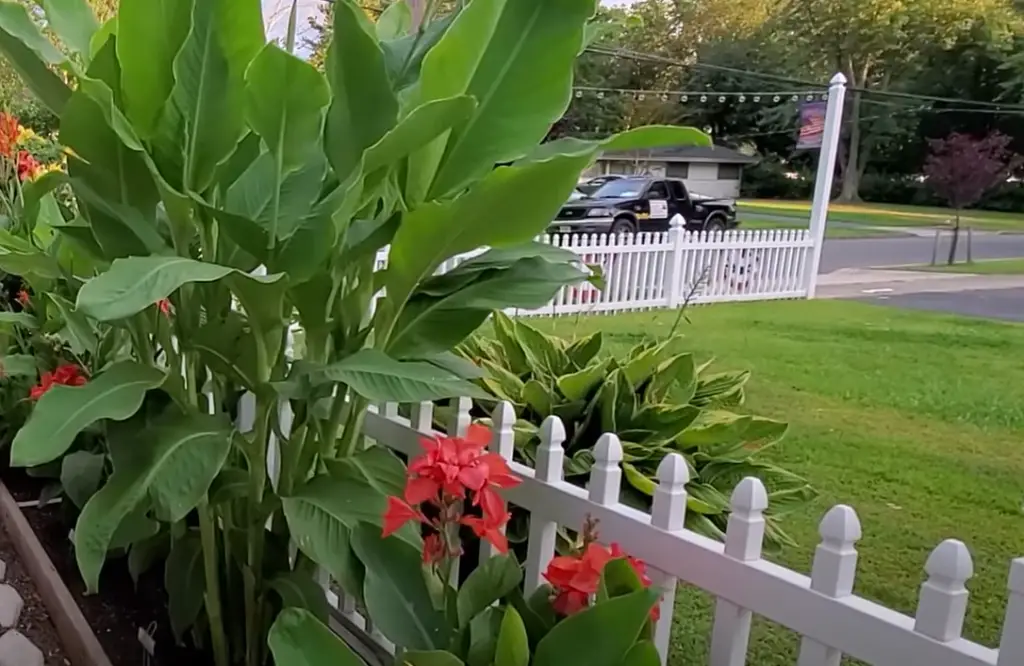
They require full sun and well-drained soil, and should be planted about 4 inches deep. Snapdragons have small blooms on short stems, making them perfect for adding color to any garden!
Zinnias
Zinnias are an easy-to-grow annual flower that come in a variety of colors. They require full sun and well-drained soil, and should be planted about 3 inches deep. Zinnias have large blooms on tall stems, making them perfect for adding color to any garden!
Asters
Asters are a classic annual flower that come in a variety of colors. They require full sun and well-drained soil, and should be planted about 4 inches deep. Asters have small blooms on tall stems, making them perfect for adding texture to any garden!
Bulbs
Dahlia
Dahlias are a classic bulb flower that come in a variety of colors. They require full sun and well-drained soil, and should be planted about 8 inches deep. Dahlias have large blooms on tall stems and make a great addition to any garden!
Hyacinth
Hyacinths are an easy-to-grow bulb flower that come in a variety of colors. They require full sun and well-drained soil, and should be planted about 4 inches deep. Hyacinths have small blooms on tall stems, making them perfect for adding texture to any garden!
Daffodil
Daffodils are an easy-to-grow bulb flower that come in a variety of colors. They require full sun and well-drained soil, and should be planted about 4 inches deep. Daffodils have small blooms on tall stems, making them perfect for adding color to any garden!
Tulips
Tulips are a classic bulb flower that come in a variety of colors. They require full sun and well-drained soil, and should be planted about 4 inches deep. Tulips have large blooms on tall stems, making them perfect for adding color to any garden!
Allium
Alliums are an easy-to-grow bulb flower that come in a variety of colors. They require full sun and well-drained soil, and should be planted about 4 inches deep. Alliums have small blooms on tall stems, making them perfect for adding texture to any garden!
Snowdrops
Snowdrops are an easy-to-grow bulb flower that come in a variety of colors. They require full sun and well-drained soil, and should be planted about 4 inches deep. Snowdrops have small blooms on short stems, making them perfect for adding color to any garden!
Gladiolus
Gladiolus are pretty flowers that come in many colors. They need to be planted in the sun and soil that drains well. Plant them 8 inches down into the ground. Gladiolus have big blooms on tall stems and look great in any garden!
Canna
Cannas are an easy-to-grow bulb flower that come in a variety of colors. They require full sun and well-drained soil, and should be planted about 4 inches deep.
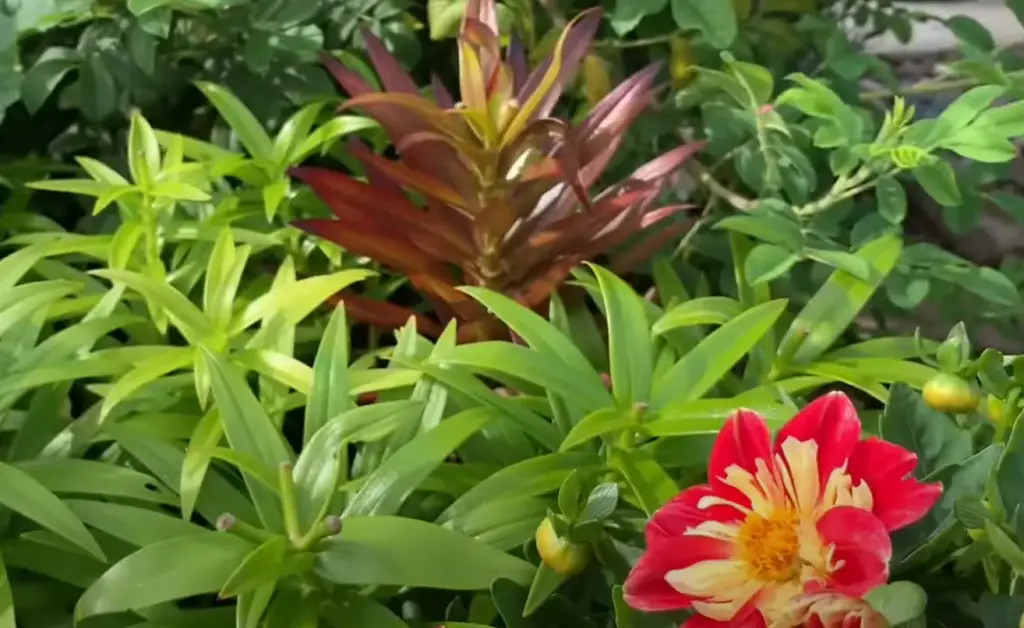
Cannas have large blooms on tall stems, making them perfect for adding color to any garden!
Additional Tips for Growing Lilies
- When planting lilies, don’t be afraid to experiment – they can handle a wide range of soils and climates.
- If you want to extend the blooming period, stagger planting times by a few weeks so that different varieties are in bloom at the same time.
- Water lilies regularly during dry weather to keep them looking their best.
- Mulch lilies with organic material such as compost or leaf mold. This helps retain moisture and suppresses weeds.
- Fertilize lilies once a year with an all-purpose, slow-release fertilizer. This will encourage strong, healthy growth and abundant blooms.
- Deadheads spend flowers regularly to keep the plants looking tidy and encourage more blooms.
- Divide lilies every 4-5 years to keep them from overcrowding. This will also help keep them healthy and productive for many years to come!
Following these tips, you can create a beautiful and vibrant lily garden that will last for years!
With the right care, your lilies will be happy and healthy, providing gorgeous blooms throughout the season. So get out there and start planting those lilies today!
FAQ
What pairs well with lilies?
Lilies pair well with other perennials such as daylilies, coneflowers, and ornamental grasses. To add even more color to your garden, try adding annuals like petunias or marigolds.
What is the best time to plant lilies?
Spring is the best time to plant lilies, as this is when they will start to bloom. If you live in a warmer climate, you can plant them in the fall.
How far apart should I space my lilies?
Lilies should be planted 12-18 inches apart so that they have room to grow and develop without being overcrowded.
Where is the best place to plant lilies?
Lilies need full sun and well-drained soil, so the best place to plant them is in an area that gets at least 6 hours of direct sunlight per day. Avoid shady spots or areas with standing water.
What is the story of Lily’s garden?
The story of the lily’s garden is a tale of love, loss, and resilience. It follows an old woman who plants a beautiful garden with her beloved lilies. When tragedy strikes and she loses her husband, the woman perseveres and continues tending to her garden in his memory.
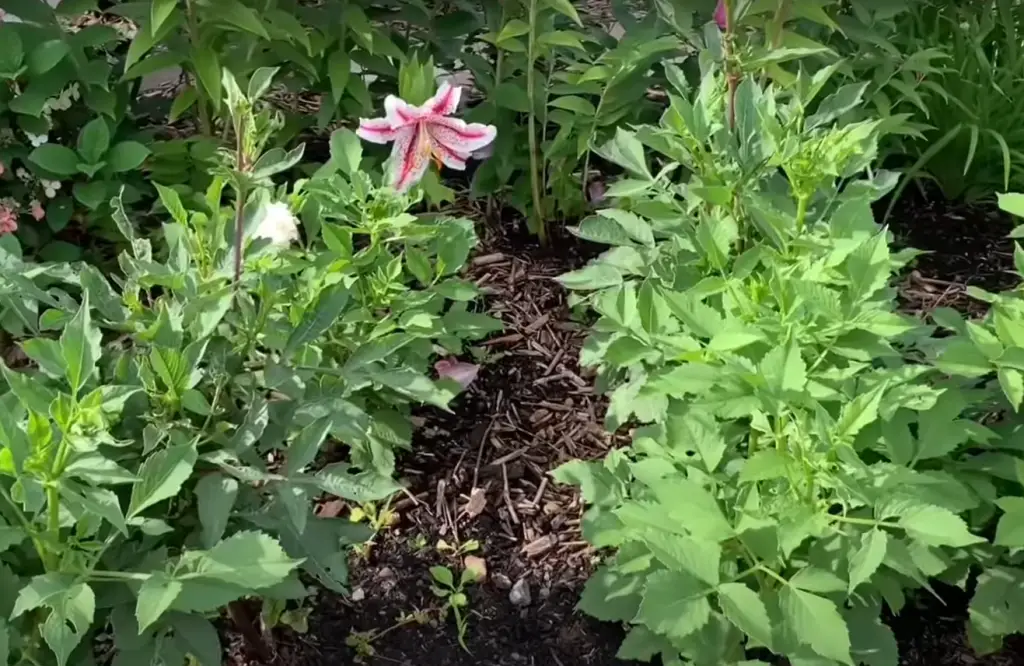
Through hard work and dedication, the garden flourishes, becoming a symbol of hope and love. The story is a reminder that no matter how hard life gets, we can always find joy in the simple things – like tending to our garden.
What can I do with lilies in my garden?
Lilies are a versatile flower that add beauty and color to any garden. You can use them as focal points in your outdoor space, or plant several of the same variety for a dramatic effect.
Lilies also make great cut flowers, so you can enjoy their beauty indoors! To extend their lifespan, try planting different varieties at staggered intervals throughout the season. This will ensure that your garden is always in bloom!
What happens after 30 days in Lily’s garden?
After 30 days in Lily’s garden, the lilies will be fully grown and in bloom. The garden will be full of vibrant colors and a variety of shapes, textures, and scents.
The old woman can take pride in her hard work and enjoy seeing the beauty that she has created with love!
How many levels does Lily’s garden have?
Lily’s garden has three levels.
- The first level is the flower beds, where she grows her lilies and other flowers.
- The second level is a path that winds through the garden and provides access to each section.
- The third level is an area of grass surrounded by trees, which provides a tranquil space for reflection or relaxation.
What advice would you give to someone just starting out in a Lily garden?
If you’re just starting out with your lily garden, the best advice is to start small. Choose one or two varieties of lilies that are easy to care for and won’t require too much work.
Also consider the size of your space – choose lilies that will fit in the area and won’t get overcrowded. Finally, make sure to do your research – understand the best soil and sun conditions for lilies, as well as their water needs.
How often should I water my Lily Garden?
Lilies need a lot of water, especially during the growing season. Generally speaking, they should be watered every few days depending on the soil and weather conditions.
In hot climates, you may need to water your lily garden daily or even twice a day in order to keep it hydrated. Make sure to check the soil before watering – if it’s damp, there’s no need to add more water.
Is there anything else I should know about Lily Garden Ideas?
Yes! There are lots of other ways to enhance your lily garden and make it even more beautiful. Consider adding mulch or ground cover plants around your lilies to keep the soil moist and protect them from weeds.
You can also use companion plants to attract beneficial insects that will help with pollination and the overall health of your garden.
Finally, consider adding a trellis or other structure to provide vertical interest and a place for climbing vines or other flowering plants.
What precautions should I take to protect my lily garden?
It’s important to protect your lily garden from pests and diseases. Make sure you keep the area clean of fallen leaves and other debris, as this can attract insects or provide a place for fungal spores to land.
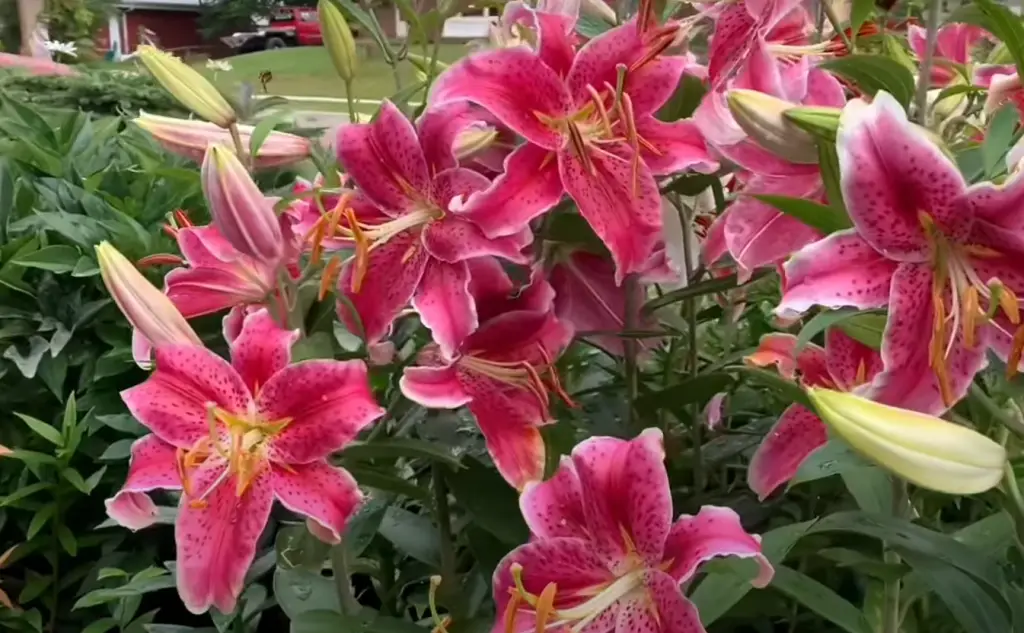
If you notice any signs of disease or pests, treat them right away to prevent it from spreading. Additionally, if you’re using fertilisers or other products in your garden, make sure they are labelled for use on lilies specifically.
What are some creative ways to use lilies in my garden?
Lilies can be used in many creative ways. Consider grouping different varieties together for a bold and unique look, or dotting them around the garden for subtle accents.
You can also use lilies to create pathways through your outdoor space, or add colourful containers of blooms near a patio or seating area. And don’t forget to use lilies indoors – with some careful planning, you can enjoy their beauty indoors!
What are some tips for keeping my lilies blooming all season?
The key to getting your lilies to bloom all season long is to provide them with the right combination of sunlight, soil and water. Make sure you choose a sunny spot that gets at least six hours of direct sunlight each day.
Amend the soil with compost or other organic material to ensure proper drainage, and water your lilies deeply several times a week. Finally, deadhead blooms regularly to encourage new growth and more flowers.
How can I make my lily garden look more attractive?
There are many ways to enhance your lily garden and make it even more attractive. Consider adding accents like a trellis, arbor or pergola for vertical interest, or add colorful containers of blooms near patios and seating areas.
You can also use companion plants to attract beneficial insects, or add mulch and ground cover plants around the lilies to keep the soil moist.
How do I protect my lily garden from pests and diseases?
It’s important to keep your lily garden healthy by protecting it from pests and diseases. Make sure you clean up any fallen leaves or debris, as this can attract insects or provide a place for fungal spores to land.
If you notice any signs of disease or pests, treat them right away to prevent it from spreading. Additionally, if you’re using fertilizers or other products in your garden, make sure they are labeled for use on lilies specifically.
What is the best way to fertilize my lily garden?
Lilies need fertilizer once a month during the growing season in order to stay healthy and bloom. Look for a fertilizer that is labeled specifically for lilies, with an analysis of 4-10-5 or 6-10-4.
Also be sure to feed during the cooler months, as this will help promote healthy growth when the weather warms up again.
Finally, don’t forget to check the soil before fertilising – if it’s too alkaline, use an acidifying fertilizer to bring the pH back into balance.
How can I bring more pollinators to my lily garden?
Attracting pollinators to your lily garden is a great way to ensure healthy blooms and plentiful harvests. Planting companion plants like daisies, lavender, yarrow or echinacea will help attract bees and other beneficial insects that will help with pollination.
You can also create a shallow birdbath or pond near your lilies to provide drinking water for the local wildlife. Finally, avoid using chemical pesticides in your garden, as these can harm beneficial pollinators.
How can I keep my lilies looking their best throughout the season?
In order to keep your lily garden looking its best, you’ll need to provide it with proper care and maintenance. Be sure to deadhead spent blooms regularly, as this will encourage new growth and more flowers.

Also check your plants frequently for signs of disease or pests, and address any problems right away. Finally, don’t forget to water your lilies deeply several times a week – this will help ensure they stay healthy and continue to put on a spectacular show!
How can I use lilies indoors?
Adding lilies to your indoor space is a great way to bring beauty and fragrance into any room. Start by locating a sunny spot that receives at least six hours of direct sunlight each day. If necessary, you can also supplement with artificial lighting.
Plant your lilies in containers filled with potting soil mixed with compost or other organic material. Finally, be sure to water thoroughly and regularly – lilies need plenty of moisture to stay healthy and bloom!
How can I extend the life of my lily blooms?
Once you’ve enjoyed the beauty of your lilies in bloom, there are a few things you can do to help extend their life. First, cut the stems and place them in a vase filled with cool water.
Then, add some flower food or sugar to the water to feed the flowers and keep them looking their best. Lastly, change the water every few days to keep it fresh – this will help your lilies continue to look beautiful for as long as possible!
How do I prepare my lily garden for winter?
When the temperatures start to drop, it’s time to take steps to protect your lilies from the cold. Start by trimming back any dead or dying foliage, as this will help keep diseases and pests away in the cooler months.
If you live in a colder climate, consider adding a thick layer of mulch around the base of your plants to help insulate them from the cold.
Finally, be sure to water your lily garden deeply at least once a month during the winter – this will ensure they stay healthy and ready for blooming when spring arrives!
How can I make my lily garden more pest-resistant?
Making your lily garden less attractive to pests is a great way to help keep it healthy and blooming. Start by keeping the area free of weeds and debris, as this will reduce the chances of pests taking up residence in your garden.
You can also try companion planting – pairing certain varieties of plants together can act as a natural deterrent to some pests. Finally, if all else fails, consider using an organic pest control product to help keep your lily garden free from unwanted visitors.
Why is soil pH important in a lily garden?
Having the right soil pH is essential for successful lily growth and blooming. The ideal pH range for growing lilies is between 6.5-7.0, depending on the variety of lilies you have planted.
To determine your soil’s pH level, use a simple test kit or take a sample to your local nursery or extension office. Once you have the results, you can adjust the pH of your soil as needed by adding sulfur and lime or other amendments.
Why is fertilisation important in a lily garden?
Fertilising your lily garden is essential for keeping it healthy, vibrant, and blooming throughout the season. Different types of fertilizer may be appropriate depending on the specific needs of your plants.
For instance, you might use a low-nitrogen fertilizer to encourage foliage growth or a high-phosphorus fertilizer to promote blooming. Be sure to read the label and follow the instructions carefully when fertilizing your lily garden to ensure it gets the nutrients it needs for optimal growth and health.
Does deadheading lilies help?
Deadheading, or removing spent blooms, is a great way to keep your lily garden looking its best and encourage new blooms. By removing the fading flowers, you can help divert energy back into the plant and stimulate more growth.
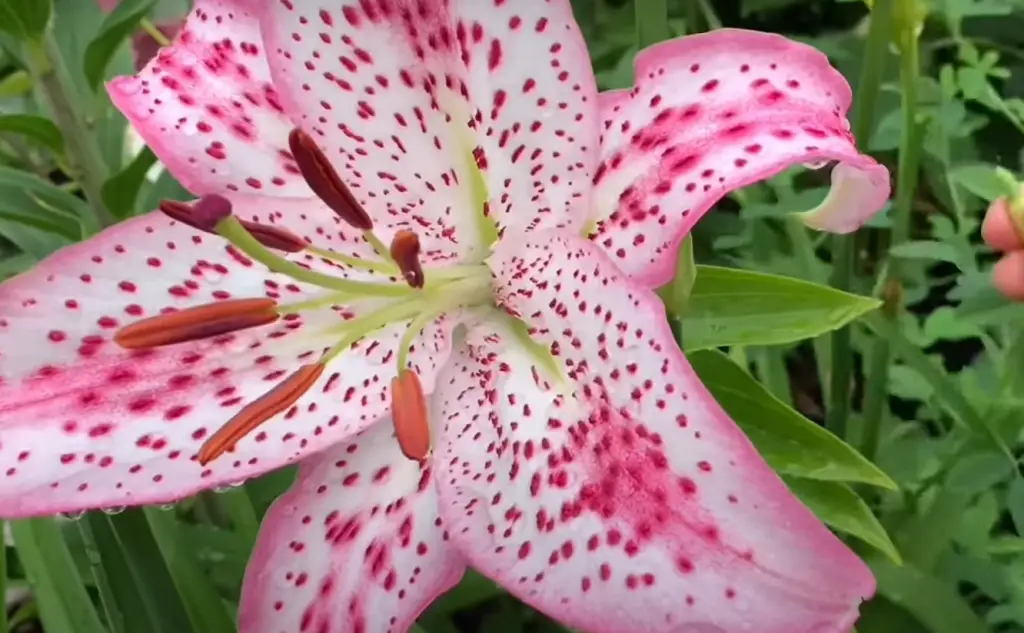
If you want to extend the flowering period of your lilies, deadheading is an easy and effective way to do so. Just be sure to use sterile tools when deadheading, as this will help prevent the spread of any diseases or pests.
What are some other ways to care for a lily garden?
In addition to fertilizing, deadheading, and preparing your lily garden for winter, there are a few other things you can do to keep it looking its best.
Pruning is one way to help keep your lilies neat and tidy, while properly spacing the plants allows for good air circulation which helps prevent diseases.
You should also water your lily garden deeply at least once a week – more often in hot, dry weather – and apply a layer of mulch around the plants to help keep the soil moist and reduce weeds.
Does my lily garden need extra protection from diseases?
Lilies can be susceptible to a variety of diseases, so it’s important to take steps to protect your plants.
Additionally, make sure you clean up any debris or old foliage around the plants, as this can provide a breeding ground for potential diseases. Finally, consider using an organic fungicide to help prevent the spread of fungal and bacterial infections in your garden.
Do I need to winterize my lily garden?
Yes, it’s important to winterize your lily garden if you live in an area with cold winters. Start by removing any dead leaves or debris and cutting back the foliage after the first frost. Then, add a layer of mulch around the plants to help insulate them and keep them protected from the cold.
For additional protection, consider covering your lily garden with burlap or other frost-proof material, and make sure to provide plenty of water before the ground freezes.
Does my lily garden need to be protected from pests?
Pests can be a problem in any garden, including lily gardens. To help keep unwanted insects and critters away, make sure you are watering your plants deeply on a regular basis and using organic pest control methods when possible.
Additionally, it’s important to check your lilies regularly for signs of pests, such as holes in the leaves or webbing. If you do find any evidence of pests, treat immediately to prevent an infestation from worsening.
Do I need to water my lily garden regularly?
Yes, it’s important to keep your lily garden watered on a regular basis for optimal growth and health. Aim to provide deep watering at least once a week – more often in hot, dry weather – and check the soil before you water to ensure there is adequate moisture.
If the top few inches of soil are dry, it’s time to water your lilies. Additionally, adding a layer of mulch can help reduce the need to water as often, while also helping to keep weeds at bay.
Can I use fertilizers in my lily garden?
Yes, using a fertilizer specifically designed for lilies can help enhance their growth and keep them looking their best. Choose a fertilizer formulated for bulbs and apply it according to the instructions on the package – usually every few weeks during the growing season.
Additionally, you should always use sterile tools when applying any fertilizer, as this will help prevent the spread of any diseases or pests.
What other tips should I keep in mind when growing a lily garden?
In addition to fertilizing, deadheading, and winterizing your lily garden, there are a few other things you can do to ensure its success.
Pay attention to the amount of sun your lilies receive and adjust if necessary, as too much or too little sunlight can cause the plants to suffer.

Additionally, make sure you are planting lily bulbs at the right depth in the soil – usually about two times deeper than their height – as this will help ensure they get adequate nutrients.
Finally, try to avoid overcrowding your lily garden, as this can inhibit their growth and development.
Can I combine different varieties of lilies in my garden?
Yes, combining different types of lilies in your garden can be a great way to create an eye-catching display. Just make sure you are mindful of their specific needs and how those may differ from one variety to the next.
Additionally, try to keep each type of lily separated by a few feet, as this will help each variety get the necessary space to grow and thrive. With a little extra care and attention, you can create a beautiful lily garden that will add life and color to your yard for years to come!
Useful Video: Lilies: Planting and Care
Conclusion
With these inspirational garden ideas, there’s no limit to the beauty you can create with lilies. From standout blooms in beds to unique arrangements outside the front door, lilies give your outdoor space a prim and proper presence.
No matter what style of decor you are working with, personalise your lily garden designs to suit you and your family’s needs.
Lilies need special care. Find out how to look after them before planting them in your garden. When they are blooming, you can enjoy their beauty and they will make your garden look very nice.
Take a step back every now and then to bask in the gorgeous sight around you enjoyed by creating your own oasis with lilies! So make sure to get creative with combination varieties; if done right, you’re sure to have a breathtaking showstopper at the conclusion of your project!
References:
- https://www.longfield-gardens.com/article/how-to-garden-with-lilies/
- https://www.gardeningknowhow.com/ornamental/bulbs/lily/companions-for-lilies.htm










Leave a Reply
View Comments